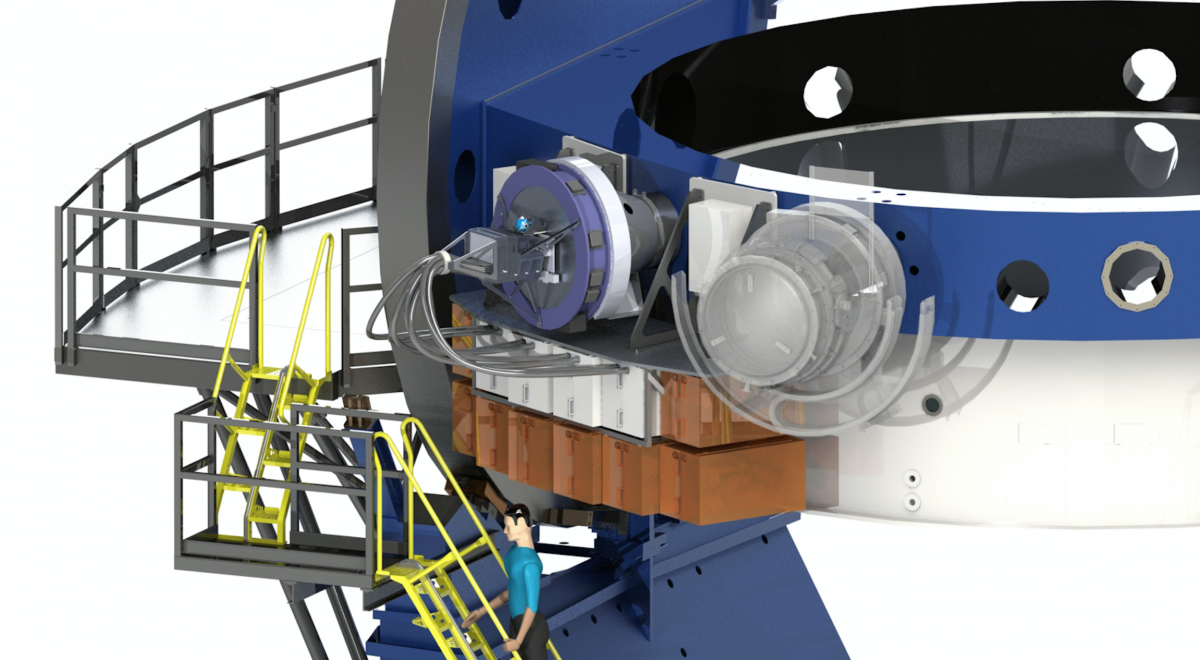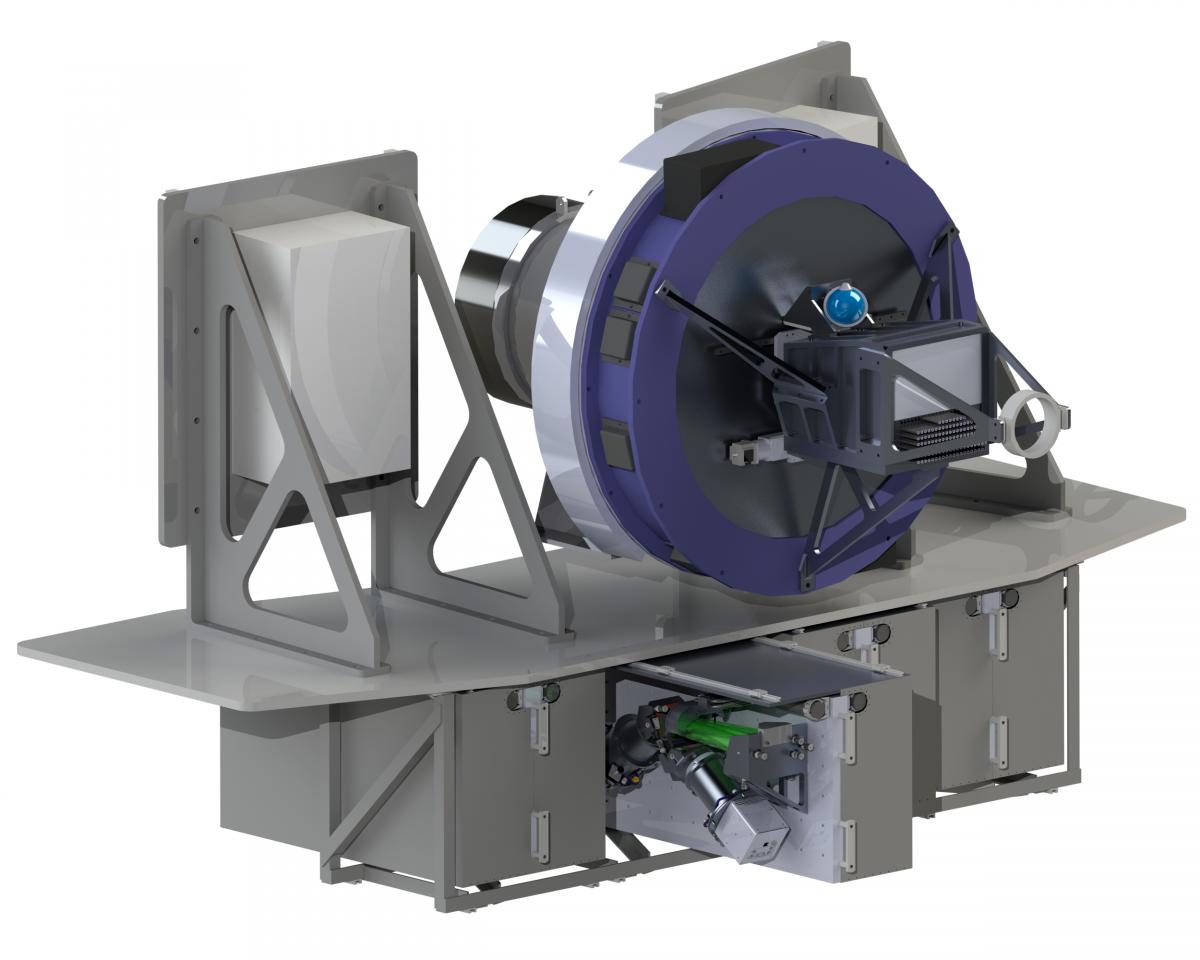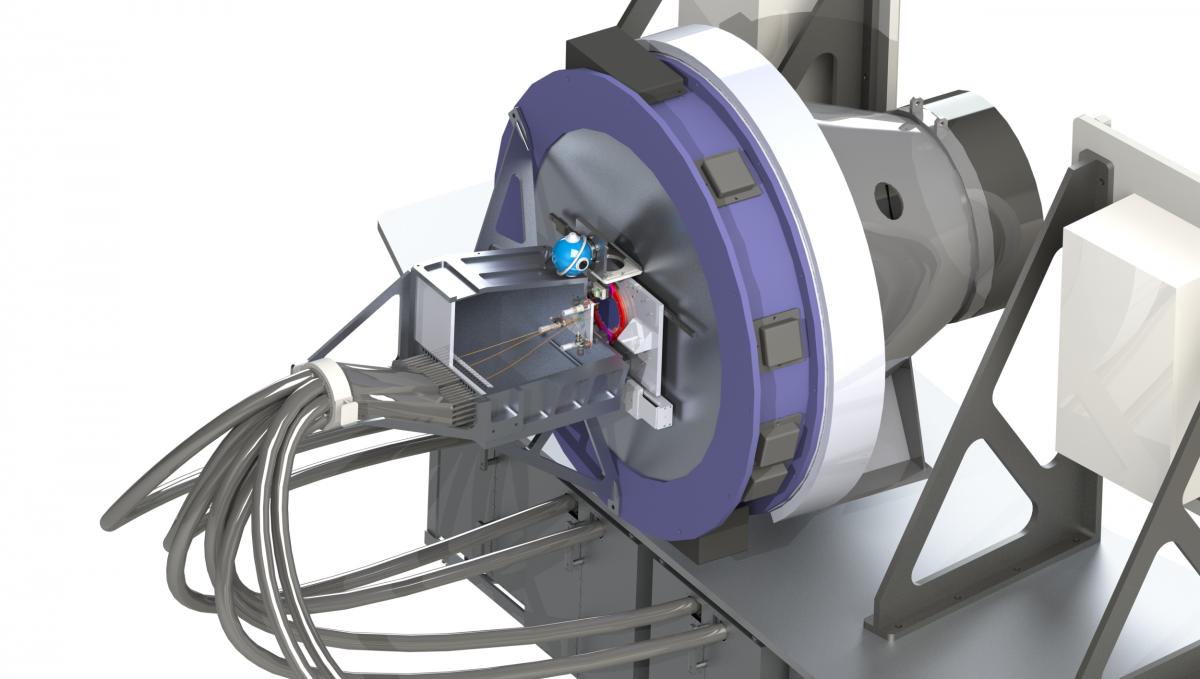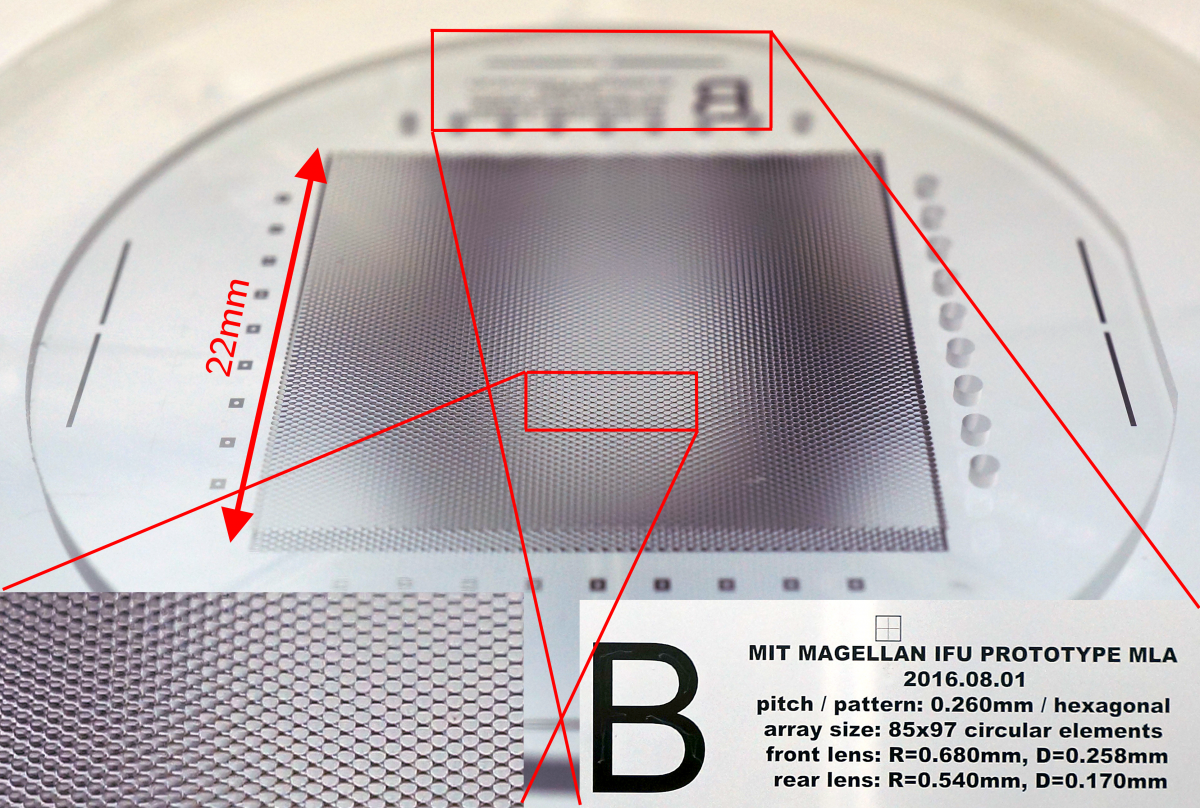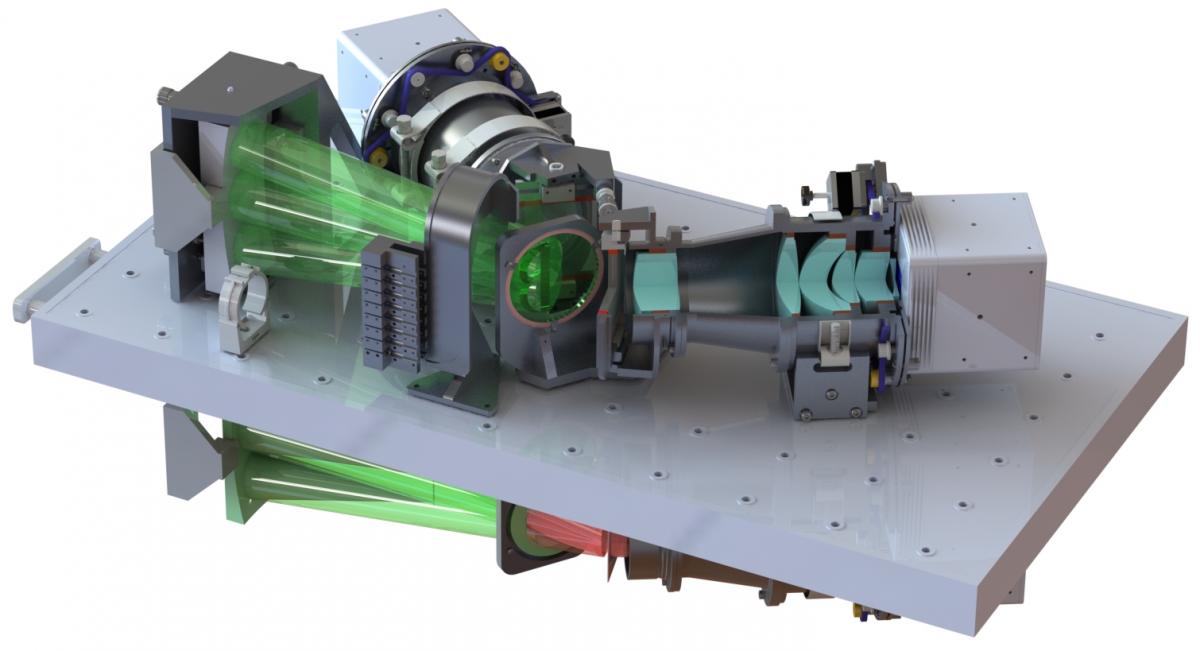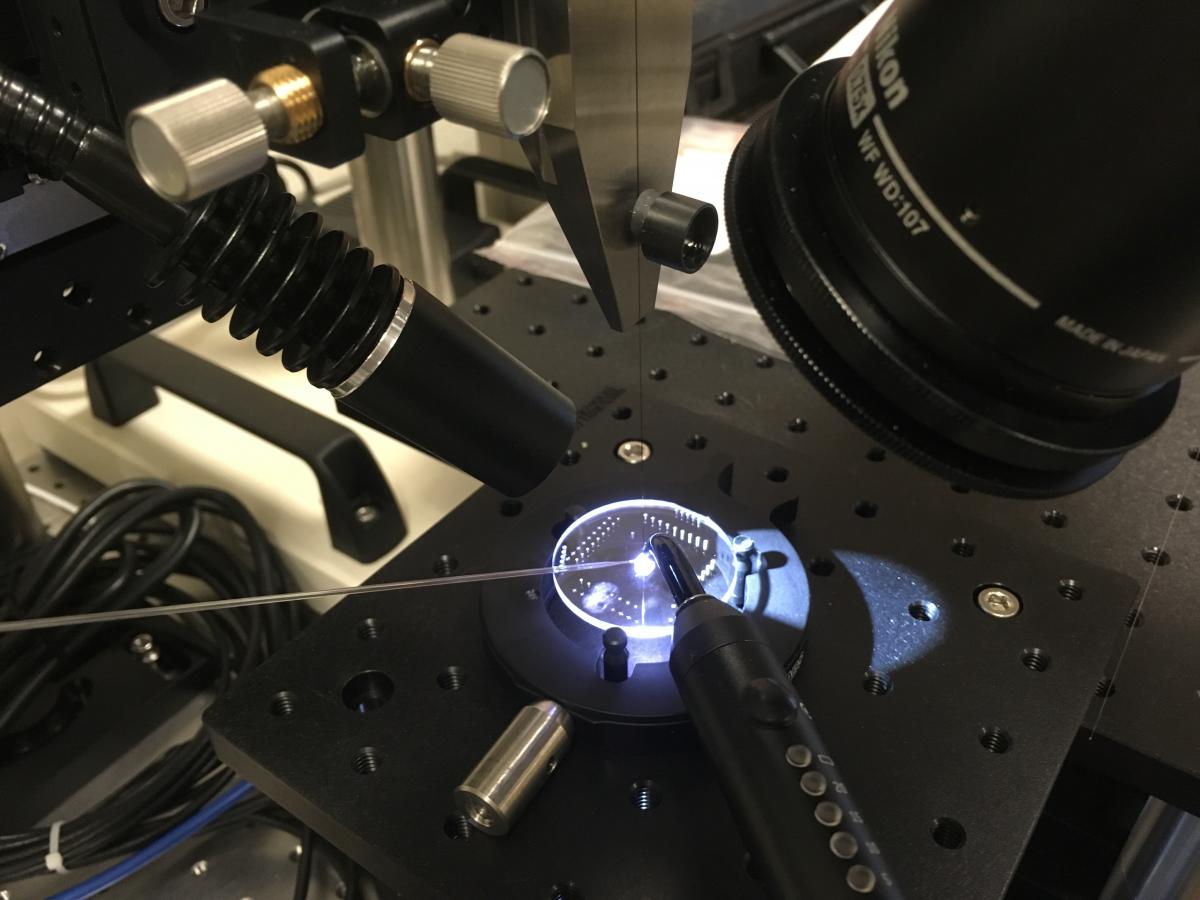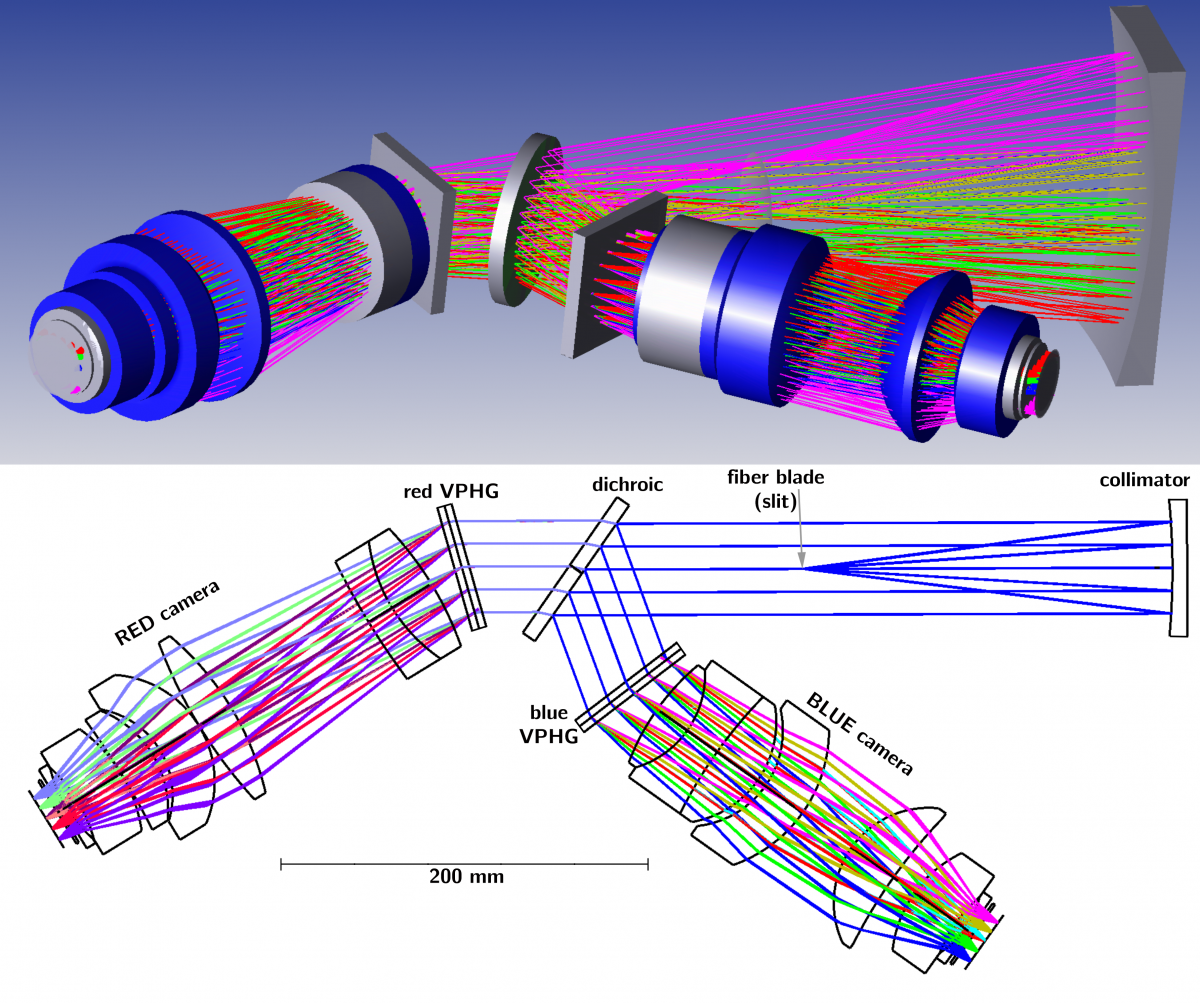Description Our role Gallery Overview (PDF)
The Large Lenslet Array Magellan Spectrograph (LLAMAS) is a funded instrument for the 6.5-meter Magellan Telescopes at Las Campanas Observatory in Chile (of which MIT is an partner). LLAMAS is an Integral Field Spectrograph - in essence an imaging tool by which astronomers extract properties of light, giving us clues to the objects that started emitting light millions and billions of years ago. LLAMAS will image light emanating from a portion of the sky that is 37" x 37", recording spectra (wavelength and intensity) at 2,400 discrete areas within that field of view. LLAMAS will enable deep exploration of distant and faint objects in our universe.
LLAMAS as it will be installed on the Magellan Telescope, next to the existing MIT instrument FIRE (white translucent).
In January of 2017 our group submitted a proposal to the National Science Foundation’s MRI (Major Research Instrumentation) program to obtain funding to build LLAMAS. The instrument was conceived of here at MIT by Professor Robert Simcoe and designed and analyzed wholly within our group. The science case for LLAMAS is strong: survey telescopes coming online in the next decade such as LSST, SPT-3G, or ALMA, will mine the sky for interesting phenomena in unprecedented depth. Yet the United States astronomical community lacks a concerted strategy for spectroscopy and astrophysical characterization of the tens of thousands of sources these facilities will uncover. LLAMAS is positioned to be a workhorse instrument for the community, delivering high throughput that allows for the observation of faint objects, high fill factor that allows the astronomer to capture virtually all sources within its field of view (FoV), and full spectral coverage of the optical band.
The instrument design consists of two major elements: An array of spectrographs and the micro-lens array (MLA). A collection of optical fiber bundles - one for each spectrograph - connects the two, feeding light from the MLA into the spectrographs which process it into spectra. The MLA, shown in the image below, features 2,560 lenses of 0.260 mm diameter each, one for each of the 2,560 fibers of 0.132 mm diameter. The fabrication and alignment of large, monolithic MLAs is technically challenging, so we have addressed this risk through prototyping. We solicited bids from three MLA suppliers, purchased a test plate from one, and have successfully plugged more than a dozen fibers into the test MLA using precision robotic equipment that our group has purchased for this and other research.
The spectrographs, 8 in number for the proposed instrument configuration, are contained in 4 box units that can be pulled out of the structural frame like a drawer and inspected or worked on. These spectrographs have been designed with low risk and low cost in mind, given the quantity that will be needed for the full instrument. Each spectrograph consists of a red channel camera and a blue channel camera, seen in the image below.
An uncovered spectrograph unit, consisting of two independent spectrographs
Plugging fibers into a test micro-lens array (MLA)
A fiber processing machine that applies heat, enabling precise splicing and drawing
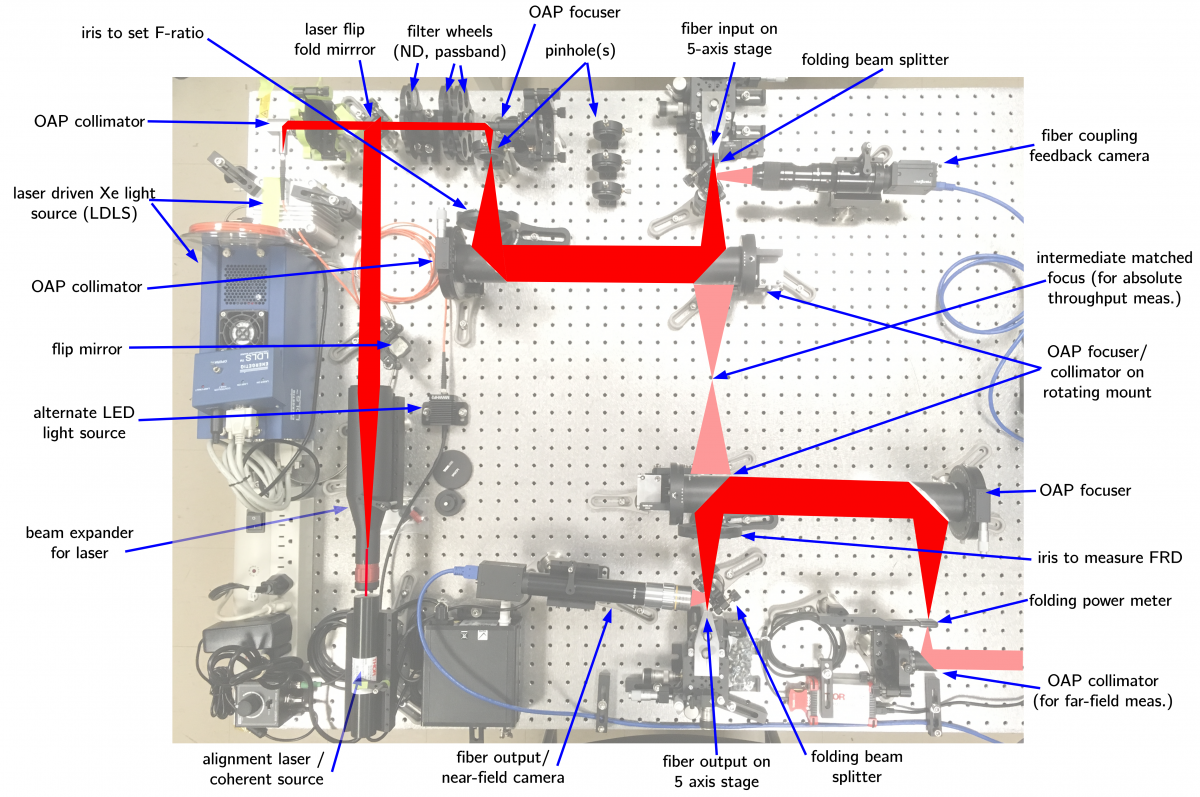
Our setup for testing FRD (Focal Ratio Degredation) of the fibers after cleaving

